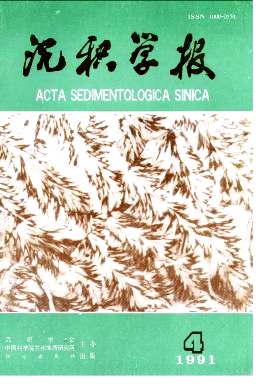The Magnetic Susceptibilities of Sedimentary Rocks and Its Relation with Oil and Gas in Ordos Basin
- Received Date: 1990-05-03
- Publish Date: 1991-12-10
Abstract: The data from several hundreds measured samples of Palaeozoic-Mesozoic sedimentary rocks shows that the magnetic susceptibility of samples of the dark rock systems is higher than that of the lightcolor rock systems and redbeds in Ordos Basin. For example, the dark limestones of the lower Ordovician, the coal-bearing formation of the upper Carboniferous as well as the dark-grey sandstones of the upper Triassic and the susceptibility of samples and the applying of the directions of magnetic linears in original susceptibility fabrics, the directions of the palaeocurrents and the confluences regions are showed in the Late Triassic Period when the main oil source beds were deposited. By the parameter (Km) of patternal changes of the anisotropic susceptibility ellipsoids, the relatively strength of the tectonic stress (horizontal tectonic press) is discussed in basinal scale. According to the theory of the influence of tectonic stress on the forming of oil and gas, it'suggests that the eastern Ordos has a good condition of preserving the Palaeozonic oil and gas because the region had undergone weaker tectonic stress from the Late Palaeozoic to the Late Triassic Period; while lower Jurassic is 1-2 number grade higher than that of other rock systems. Even within dark rock systems the susceptibilities of samples from the organic rich rocks is higher than those of organic poor ones, and within lightcolor rock systems the data from oil-bearing rocks is also higher than those from other rocks. These phenomena imply that there may exist some relation between the high susceptibilities and organic matter. The results of thermal demage show that most of ramanence of the rock samples is removed prior to 450℃, which indicates that the magnetic minerals in rocks might be mainly the type of Fe+2 . By measuring and analysing of the anisotropic magnetic the western Ordos might have unfavourable condition because the region had undergone stronger tectonic stress in the end of the Triassic, which made the Palaeozoic oil and gas region matured early but not easy to be preserved. Since the Jurassic Period, stronger tectonic stress led to the maturation of oil and gas source rock (Palaeozoic-Mesozoic) of eastern Ordos and made the preservative ability better.
| Citation: | Lu Wei, Peng Zuolin, Huang Huafang. The Magnetic Susceptibilities of Sedimentary Rocks and Its Relation with Oil and Gas in Ordos Basin[J]. Acta Sedimentologica Sinica, 1991, 9(4): 110-119. |






 DownLoad:
DownLoad: